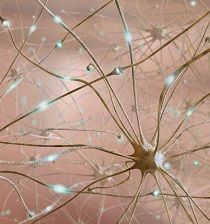Article
Skin Biopsy Indicates Neuropathic Pain Following Nerve Injury
Author(s):
While skin biopsies can give insight to epidermal innervation after a nerve injury, properly identifying pain becomes more challenging in those with neuropathy.
While skin biopsies can give insight to epidermal innervation after a nerve injury, properly identifying pain becomes more challenging in those with neuropathy.
The study, presented at the 2015 annual meeting of the American Academy of Neurology in Washington, DC, aimed to find which one out of 3 epidermal innervation markers best predict neuropathic pain. Lead author Joost Jongen, of the Department of Neurology of Erasmus MC in the Netherlands, and his colleagues went a step further with testing how reliable the measures were and if all of the epidermal nerve fibers (peptidergic and nonpeptidergic) showed heightened pain responses.
“Conflicting data on the correlation of epidermal innervation with pain intensity exist in humans with neuropathic pain,” the authors wrote.

To find that parallel, 21 rats had partial ligation of the left sciatic nerve and the von Frey (VF) hairs and hotplate (HP) withdrawal responses were recorded. The researchers measured PGP9.5, CGRP, and P2X3 immunohistochemistry by taking a skin biopsy from each subject 14 days after the nerve process. Finally, 2 blind observers analyzed the epidermal nerve fiber density (IENFD), number of branches per unit, and total epidermal nerve fiber with mm2.
Not only did the study reveal that the rats developed significant mechanical and thermal hyperalgesia, but PGP9.5 and P2X3 IENFD and epidermal nerve fiber lengths proved to be sensitive neuropathy markers.
“We conclude that both IENFD and epidermal nerve fiber length are sensitive and reliable measurements of neuropathy,” the team discussed. “A decrease of P2X3 fibers, but not PGP9.5 and CGRP-fibers, seems to correlate with hyperalgesia following nerve injury.”
This discovery suggests that the damage to nerve fibers leads to degeneration which ultimately drives neuropathic pain.



